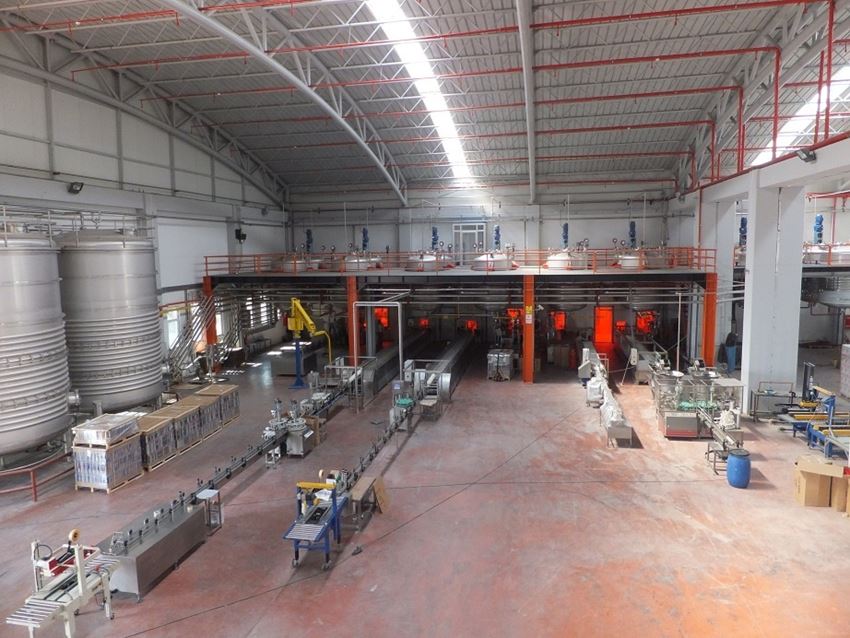SODIUM- POTASSIUM SILICATE AND DERIVATIVES FACILITIES
SODIUM-POTASSIUM SILICATE AND DERIVATIVES FACILITIES
A_ Direct attack method (silicon dioxide + caustic soda) and Sodium Silicate production facilities
Production Method: Silica is based on reaction with sodium hydroxide under heat and pressure. This is called Alkali silicate. The method is called "direct attack".
B_ Soda glass production (sodium carbonate + silicon dioxide melting) and Sodium Silicate production plants with solubility from this product
Production Method: It is based on the solubility of soda glass particles made by melting soda with water under heat and pressure. This is called "Neutral silicate".
C_ Sodium Meta Silicate, Penta Hydrate, Anhydrous Sodium Silicate and Amorphous Silica production plants
Anhydrous sodium meta-silicate in powder form with sodium meta-silicate containing crystal water are among the integrated products of silicate. In addition, amorphous silica is obtained from the treatment of sodium silicate with sulfuric acid.
D_ Potassium Silicate (K2SiO3) production facilities
Potassium Silicate is produced by reaction of Potassium carbonate or Potassium hydroxide with Silicon dioxide. Production stages are similar to sodium silica.
It can be used in all areas where sodium silicate is used. It is used in other areas due to its different features and superiorities.
Potassium silicate added concretes are resistant to all other acids and concentrations except hydrofloric acid (HF).
Potassium silicate based paints, like other types of paints, are not based on the adhesion of the binder, but on the basis of fusion. For these and other reasons, silicate paints are very important. Please refer to BEECK and LAPONITE paint.
A- SPECIFICATION / COMPOSITION
Liquid products can be used with or without filter MODULE for silicate:% SiO2 / Na2O ratio. It is between 0.4 and 4.0. It is practically 1.6 to 3.2 and is 1.1 for sodium meta silicate.
Solution mole ratio SiO2 Na2O H2O gravite :gr/cm3
Nötr 38Bé 3. 25.85 7.85 66.3 1.37
Nötr 40Bé 3. 27.25 8.25 64.5 1.38
Alkali 38Bé 1.8-2.2 21.1 10.6 68.3 1.36
Alkali 40Bé 1.8-2.2 22.4 11.2 66.4 1.38
Alkali 50Bé 1.8-2.2 29.1 14.6 56.3 1.53
Alkali 60Bé 1.8-2.2 36.7 18.3 45. 1.71
B- APPLICATION AREAS
Let's evaluate in two parts Functional functioning of the product that it enters as raw material in the production of silicate integrated products
a- Sodium silicate as raw material: AMORF is the main ingredient of SILICA production Amorphous silica is used as a filler in the production of rubber, rubber, cable, shoe sole. Amorphous Silica adds strength and strength. Sodium silicate is an intermediate of sodium aluminum silicates and other silicates. Sodium aluminum silicates are used in paints, food and other important productions
b- Sodium silicate mixtures, compositions and functional functions here:
1- Detergent and soap industry: It is an alkali with very good cleaning feature. It is not corrosive and protects fiber and metallic surfaces. Up to 24% of all tower powder detergents are sodium silicate. “It provides very good granule formation in the spray dry process. It is a good filler. Dishwashers are an important input of powder detergents and soaps.
2- Ceramic industry: It is used as a defloculant and provides fluidity and gliding. It gives high hardness to the product.
3-Textile industry: Provides peroxide control and iron, manganese heavy metals balance in finishing processes
4- In cement and building production: It gives hardness to concrete. Acid and fire resistant,
5- In the production of refractory materials and casting: Refractory material provides excellent strength and acid resistance.
6-Pulp in paper production: Converting more in bleaching with peroxide,
7- In the production of cardboard and packaging: Adhesive feature provides robustness and economy
8-In oil production drilling operations: control swelling of weak rocks, corrosion
and prevent emulsion formation
9- Pelletizing and briquette production: as an adhesive
10- Welding electrode production: the surface of the electrode is covered. It provides good adhesion and fluency in the welding process.
11- Antifreeze production
12- Agriculture / Soilless plant production
13- Paint production and protective and decorative coating processes
14- Used as anti-corrosion and wastewater treatment in an infinite number of other consumption areas
 English
English